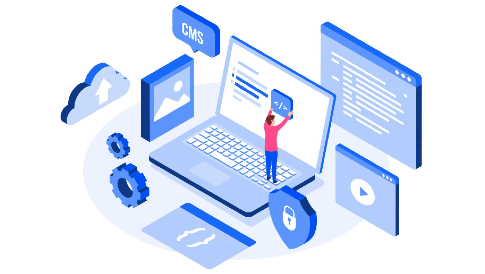Cloud Browsing : A Primer
One thing is clear: cloud browsing captures attention in the tech space. As online privacy and security become more crucial, understanding how cloud browsing can help you or your business is imperative. This article provides a comprehensive primer on cloud browsing, its necessity, and practical applications.
Defining Cloud Browsing
Cloud browsing uses a web browser that runs on remote servers rather than your local device. Often called a virtual browser, it allows users to access web content through a cloud-based environment. All browsing activities occur on remote servers; only the visual interface is streamed to the user’s device.
How Does It Work?
Your requests are sent to a remote server when you initiate a browsing session. The server processes these requests, renders the web pages, and then streams the content back to you. This process ensures that your local device doesn’t directly interact with the web content, enhancing security and privacy.
For example, consider watching a video on a streaming platform. In traditional browsing, the video data is downloaded to your device. In cloud browsing, the video is processed on the remote server, and you receive a stream of the visual output. This approach reduces bandwidth consumption and lowers the risk of downloading malicious content.
Key Features
Let’s explore some of the standout features that make cloud browsing a compelling choice:
- No Need for Personal Infrastructure: Users don’t require powerful hardware or specialized servers; everything runs in the cloud, reducing costs and simplifying setup.
- Proper Proxy Support with Working UDP: Enhanced networking capabilities allow smoother connections and data transfer. UDP support is essential for real-time data transmission applications like live streaming or online gaming.
- Fingerprints of Real Unique Devices: Cloud browsers can mimic device fingerprints, reducing the chances of being flagged or blocked. This is particularly useful for testing websites or services that employ fingerprinting techniques to track users.
- Session Observation and Control: Users can monitor and manage every session directly from their local browser. This level of control is beneficial for administrators overseeing multiple sessions or devices.
The Necessity of Cloud Browsing
Why should one consider using a cloud browser? The answer lies in the increasing concerns over online privacy and security.
Browser Fingerprints
Every device and browser combination leaves a unique fingerprint that websites can track. These fingerprints include details like screen resolution, installed plugins, time zones, and more. Websites use this information to create a profile of your browsing habits, which can then be used for targeted advertising or, in some cases, more nefarious purposes.
Using cloud browsing, you can present fingerprints of authentic, unique devices, making it harder for websites to track your activities. The cloud browser can randomize or standardize these fingerprints, providing an additional layer of anonymity.
IP Leaks
An IP address can reveal much about a user, including their geographic location. Traditional methods of masking an IP address involve using VPNs or proxies, which can sometimes be unreliable or slow. Cloud browsers help mask your IP address, route your requests through remote servers, and protect your identity.
Additionally, such browsing can prevent IP leaks due to misconfigurations or vulnerabilities in VPN software. Your local IP address remains hidden since the remote server handles all traffic.
Security
Cloud browsing minimizes the risk of malware and other security threats reaching your local device by isolating browsing activities from remote servers. Since the content is rendered in the cloud, malicious code has fewer opportunities to execute on your hardware.
For organizations, this means reducing the attack surface for cyber threats. Employees can browse the web without exposing the internal network to potential risks. For individuals, it provides peace of mind knowing that harmful websites cannot directly affect their devices.
Practical Applications
Cloud browsing isn’t just a theoretical concept; it has real-world applications that can enhance productivity and security.
Browser Automation(s)
Cloud browsing makes automating browser tasks more efficient. Scripts and automation tools can run in the cloud, reducing the load on your local machine and allowing for scalability. Developers and testers can execute automated tests across multiple browsers and devices without extensive infrastructure.
Moreover, it allows for parallel task execution. This means multiple automation scripts can run simultaneously, significantly reducing the time required for testing or data collection.
Managing Multiple Social Media Accounts
For those who handle numerous social media profiles, especially on platforms like Instagram and TikTok, cloud browsers offer a way to manage these accounts without the hassle of logging in and out or risking account flags due to multiple sessions from a single IP address.
Social media platforms often have strict policies against managing multiple accounts from the same device or IP address. Cloud browsing with unique device fingerprints and IP addresses helps avoid these restrictions. Social media managers can streamline workflows, ensuring seamless operation across all accounts.
Web Scraping and Data Extraction
Web scraping requires numerous website requests, which can lead to IP blocking or other restrictions. Using cloud browsing with proper proxy support allows for more efficient data scraping while minimizing the risk of being blocked.
Data scientists and analysts rely on web scraping to collect large datasets for research or business intelligence. Cloud browsing enables them to scale their operations without worrying about infrastructural limitations. Additionally, cloud browsers can handle JavaScript-heavy websites that traditional scraping tools might struggle with.
Comparison of Traditional Browsing vs. Cloud Browsing
| Feature | Traditional Browsing | Cloud Browsing |
| Requires Personal Infrastructure | Yes | No |
| Exposure to Malware | High | Low |
| IP Address Masking | Requires VPN/Proxy | Built-in |
| Browser Fingerprinting | Easily Tracked | Mimics Unique Devices |
| Resource Consumption | High on Local Device | Low on Local Device |
Recognizing Current Limitations
While cloud browsing offers many benefits, it’s essential to acknowledge its limitations.
Network Latency
Users may experience delays or reduced responsiveness, especially if the remote server is geographically distant or if the internet connection is unstable. Cloud browsing relies entirely on internet connectivity. Any disruptions or slowdowns in your connection can hinder your browsing experience. Unlike traditional browsing, which allows some content to be cached or accessed offline, it requires a constant connection.
Cost Considerations
While cloud browsing reduces the need for personal infrastructure, it can introduce new costs. Subscription fees for cloud browsing services may be a factor for some users. Organizations need to weigh these costs against enhanced security and scalability benefits.
Final Reflections
Users gain privacy, security, and efficiency by offloading browsing activities to the cloud. Whether automating tasks, managing multiple accounts, or scraping data, cloud browsing provides tools that adapt to modern needs.




Leave a Reply